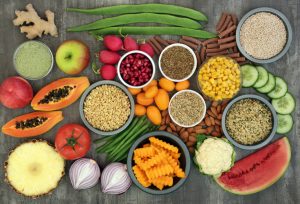 One of the most important measurements we take in the food industry is pH. Almost everything to do in food manufacturing can be altered by way of small changes to pH levels. The implications for food safety and quality are significant.
One of the most important measurements we take in the food industry is pH. Almost everything to do in food manufacturing can be altered by way of small changes to pH levels. The implications for food safety and quality are significant.
What exactly is pH, and how is it leveraged to create a final food product specification? Learn more about the importance of pH in food below.
What Is pH?
Every substance has a measurable level of acidity or alkalinity, determined by the number of hydrogen (H) or hydroxyl (OH) ions. The ratio of those two numbers determines the acidity of a given aqueous solution. A relatively higher number of hydrogen ions means a solution is more acidic, versus a hydroxyl-centric solution, which will be more alkaline.
This measurement is useful in determining characteristics from soil quality to water quality. For our purposes, this gives us a useful food acidity scale.
How Does pH Affect Food?
The food pH scale helps manufacturers understand precisely how a specific ingredient might react with another. It also determines how a product might fare in a given environment. Here are some food features and processes influenced by pH levels:
- Production: How we prepare food is largely influenced by food ingredient acidity. For example, bread fermentation and wine aging are greatly affected by pH. That acidity/alkalinity ratio determines the speed and duration of the reactions necessary to create the desired end product.
- Taste: Flavors change dramatically by pH ratios. A person might prefer more of a bite that comes from acidic food and beverages — a dry wine, for example. The pH level can also diminish the intensity of sour tastes. That same science can be applied to dairy products and processed food.
- Texture: Almost more than taste, consumers judge a product by how it feels. The texture of food can make a consumer’s mouth water or cringe. Adjustments in pH lead to alterations in final product texture, influencing the perception of enjoyment by the consumer. Think of a creamy blue cheese versus a crumbly aged Gouda.
- Appearance: Looks matter with food. Veggies are an excellent example of food products that are judged largely by how green and crisp they appear. The appearance of produce acts as a barometer for pH levels as they play a role in outer color and texture. Food manufacturers can slow the change in color by tweaking pH levels using specific substances and ingredients during preparation. Likewise, they can stop pH changes entirely using freezing techniques.
Food Safety Is Top Priority
Beyond surface features, pH levels have a huge influence over how long a food product is safe for consumption.
Over time, food products such as dairy and fresh produce lose their natural acidity. Eventually, the balance tips and bacteria are able to replicate. While timing is key, especially for foods with a shorter shelf life, food manufacturers can utilize pH-altering ingredients to protect against bacterial growth while preserving the quality of the food.
For example, food manufacturers might add vinegar or lemon juice to mayonnaise and dressings to significantly lengthen shelf life and keep consumers safe. From start to finish, food safety depends on accurate and highly controlled pH measurements.
How Is pH Managed?
As noted in the mayonnaise example above, food manufacturers can add key ingredients to lock ideal pH levels into place. Yet the process of pH management is far more comprehensive.
From the outset, manufacturers must understand the natural pH of raw ingredients and how those levels will change over time and in what environments. From there, they can adjust ingredients, as necessary, to replace lost acidity as food production progresses.
A major component of managing pH is to take frequent, detailed measurements. Because pH is such a precise science, food manufacturers use complex tools to trace pH at every level of production. Thorough monitoring and record-keeping help ensure the ability to create safe, appetizing food products.
Trust PacMoore to Manage pH Levels in Your Food Products
Experience matters. When it comes to pH management, nuance is everything. PacMoore has been an industry leader in food manufacturing for years. We’ve built an extensive knowledge base in countless food sectors. Additionally, we bring the experience and equipment necessary to provide highly accurate measurements at every stage.
pH management is complex, and we’re happy to walk you through the process. Contact us today to learn about our specific techniques and to see how we can partner to produce safe, perfectly balanced food products.